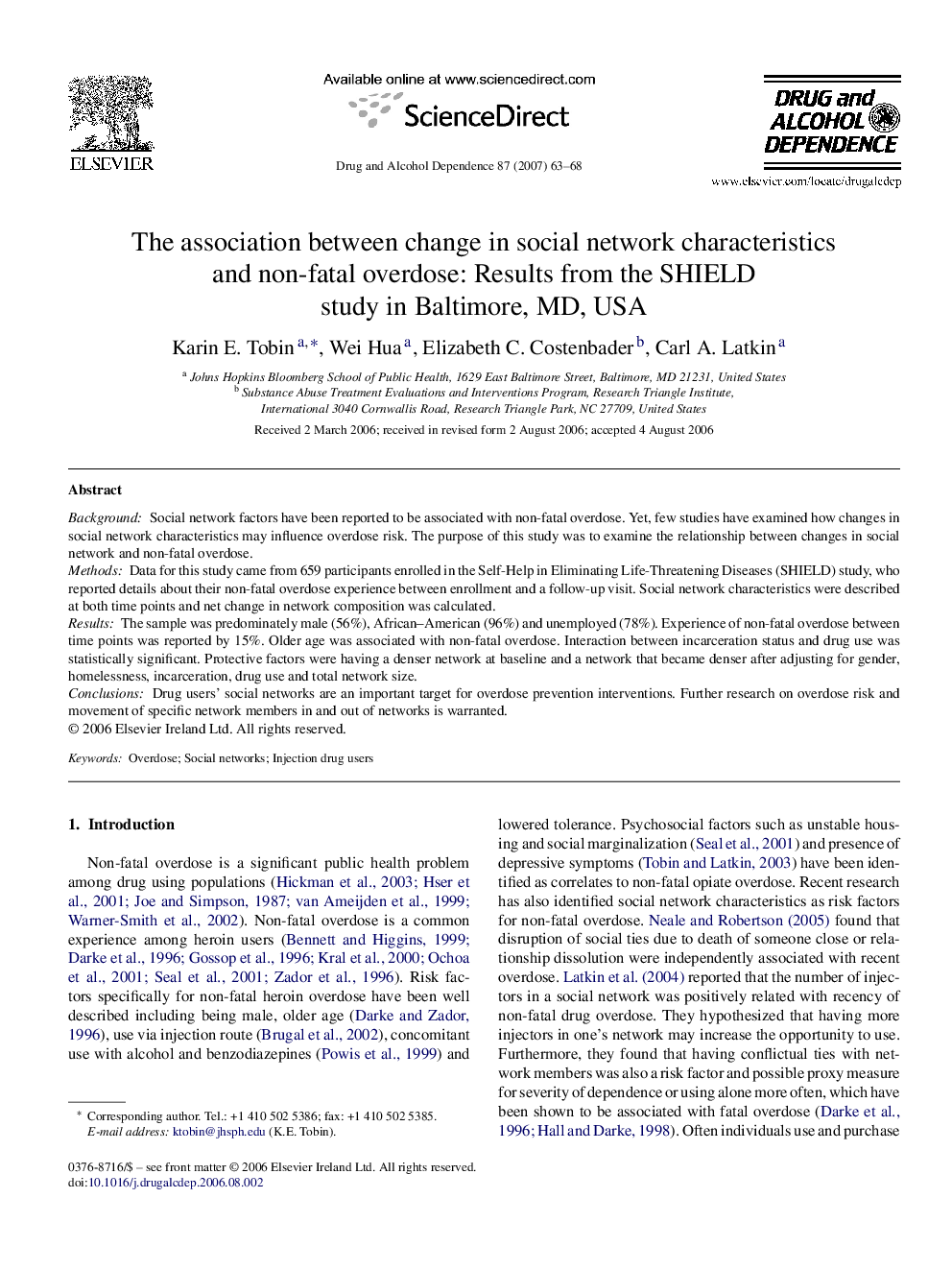| Article ID | Journal | Published Year | Pages | File Type |
|---|---|---|---|---|
| 1071692 | Drug and Alcohol Dependence | 2007 | 6 Pages |
BackgroundSocial network factors have been reported to be associated with non-fatal overdose. Yet, few studies have examined how changes in social network characteristics may influence overdose risk. The purpose of this study was to examine the relationship between changes in social network and non-fatal overdose.MethodsData for this study came from 659 participants enrolled in the Self-Help in Eliminating Life-Threatening Diseases (SHIELD) study, who reported details about their non-fatal overdose experience between enrollment and a follow-up visit. Social network characteristics were described at both time points and net change in network composition was calculated.ResultsThe sample was predominately male (56%), African–American (96%) and unemployed (78%). Experience of non-fatal overdose between time points was reported by 15%. Older age was associated with non-fatal overdose. Interaction between incarceration status and drug use was statistically significant. Protective factors were having a denser network at baseline and a network that became denser after adjusting for gender, homelessness, incarceration, drug use and total network size.ConclusionsDrug users’ social networks are an important target for overdose prevention interventions. Further research on overdose risk and movement of specific network members in and out of networks is warranted.
